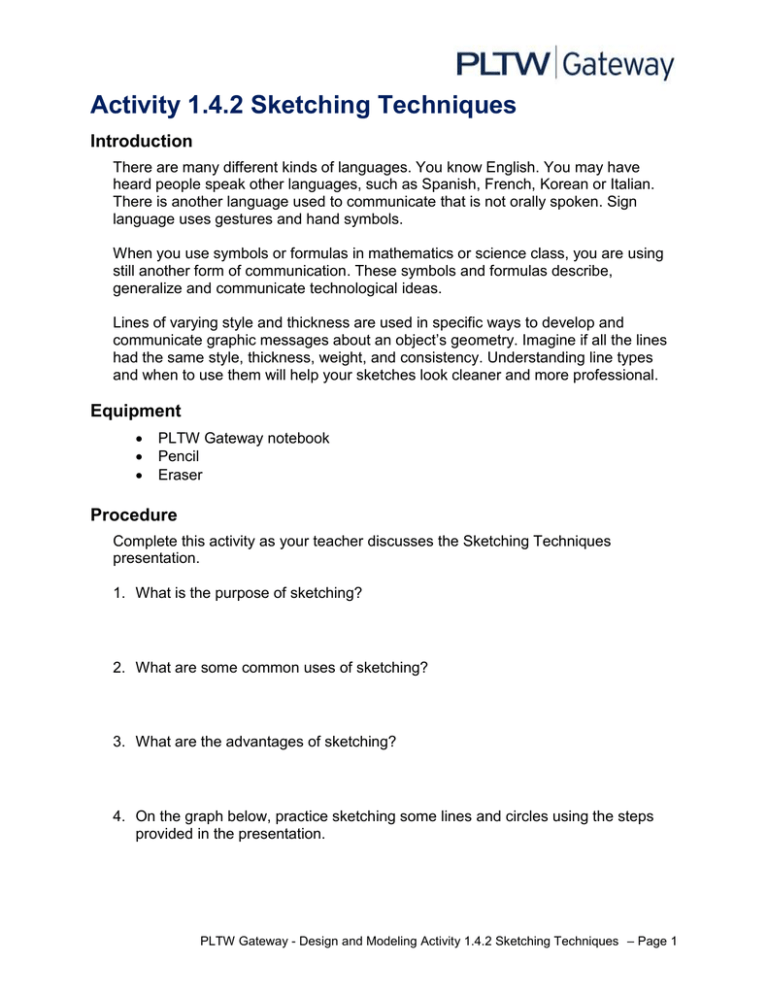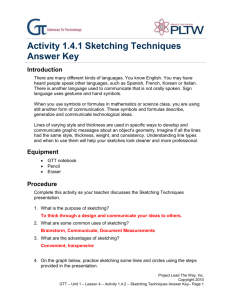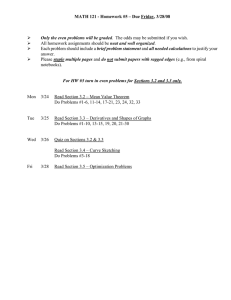Activity 1.4.2 Sketching Techniques Introduction
advertisement

Activity 1.4.2 Sketching Techniques Introduction There are many different kinds of languages. You know English. You may have heard people speak other languages, such as Spanish, French, Korean or Italian. There is another language used to communicate that is not orally spoken. Sign language uses gestures and hand symbols. When you use symbols or formulas in mathematics or science class, you are using still another form of communication. These symbols and formulas describe, generalize and communicate technological ideas. Lines of varying style and thickness are used in specific ways to develop and communicate graphic messages about an object’s geometry. Imagine if all the lines had the same style, thickness, weight, and consistency. Understanding line types and when to use them will help your sketches look cleaner and more professional. Equipment PLTW Gateway notebook Pencil Eraser Procedure Complete this activity as your teacher discusses the Sketching Techniques presentation. 1. What is the purpose of sketching? 2. What are some common uses of sketching? 3. What are the advantages of sketching? 4. On the graph below, practice sketching some lines and circles using the steps provided in the presentation. PLTW Gateway - Design and Modeling Activity 1.4.2 Sketching Techniques – Page 1 5. Label the line types shown below: a. b. c. d. PLTW Gateway - Design and Modeling Activity 1.4.2 Sketching Techniques – Page 2 6. Label the line types shown in the drawing below: a. _____________________ b. _____________________ c. _____________________ d. _____________________ e. _____________________ f. _____________________ g. _____________________ Conclusion 1. Why is it important that you learn how to sketch? 2. Why is it important to use the proper line types? PLTW Gateway - Design and Modeling Activity 1.4.2 Sketching Techniques – Page 3



